A Comprehensive Guide to Understanding Data Dictionaries
In the past, keeping track of it all was a nice-to-have; today, it’s survival. As companies juggle data from ERP, SCM, HCM, CRM systems, and external platforms, the pressure to keep metadata clean, clear, and under control has never been greater. That’s where the data dictionary comes in.
This guide revisits the data dictionary through a practical lens. We’ll break down what it is, why it matters, how it fits into governance and analytics, and how platforms like Arkon Data Platform help make it usable, not just theoretical.
What Is a Data Dictionary?
At its core, a data dictionary is a central hub for metadata. It defines data elements, types, descriptions, relationships, and business rules. Think of it as the shared language between your technical teams and your business users. When everyone uses the same terms, communication flows better.
Why a Data Dictionary Matters
Data dictionaries are more than just glossaries. They have become a strategic tool that helps:
-
Boost data quality: with standardized formats, validation rules, and naming conventions.
-
Support compliance: by tracking ownership, lineage, and usage limits.
-
Speed up onboarding: by giving new users clear context on what data means and how to use it.
-
Strengthen governance: by acting as the foundation for policy enforcement.
Whether you're building dashboards, training models, or collaborating across departments, a data dictionary keeps everyone aligned.
Key Components of a Good Data Dictionary
-
Data Elements and Attributes: Field names, data types, and valid values.
-
Definitions and Descriptions: Clear explanations in plain English—no jargon.
-
Relationships and Dependencies: How different tables and fields connect (joins, keys, parent-child links).
-
Business Rules and Validations: Rules for input, calculation, and transformation logic.
-
Source and Ownership: Where the data comes from and who’s responsible for it.
-
Usage Context: Where the data shows up—dashboards, reports, models, etc.
Quick Guide: Building and Running a Data Dictionary
Setting one up sounds simple, but scaling it across a modern data stack is anything but. Here's how the process usually goes:
-
Define the Scope: Start with the most critical domains—finance, HR, supply chain.
-
Ingest Metadata: Pull metadata from your systems (databases, Oracle Cloud apps, file systems).
-
Normalize and Enrich: Apply standards for naming, definitions, and categories.
-
Set Governance Rules: Decide who can edit entries and how changes get approved.
-
Embed in Daily Workflows: Make it accessible via Databricks, Microsoft Fabric, or wherever your teams already work.
Best Practices to Keep It Working
-
Automate Metadata Capture: Use APIs and connectors to pull metadata from Oracle Cloud, Salesforce, SQL systems, etc.
-
Tie to Your Business Glossary: Link technical terms with business definitions for shared understanding.
-
Connect to Catalogs and Lineage Tools: Show how data moves and transforms across systems.
-
Watch for Drift: Review regularly to keep things accurate as systems evolve.
-
Encourage Adoption: Make it easy to search, understand, and contribute.
The Role of Data Dictionaries in the Data Ecosystem
A data dictionary does not operate in isolation but interacts with other components of the data management ecosystem:
-
Integration with data cataloging and metadata management systems: Data dictionaries can be integrated with data cataloging platforms or metadata management systems to provide a comprehensive view of the organization's data assets, fostering data discovery and lineage.
-
Interconnections with data lineage and data governance frameworks: Linking data dictionaries to data lineage and data governance frameworks enables organizations to establish end-to-end data traceability, monitor data quality, and enforce data governance.
-
Relationship between data dictionaries and data modeling: Data dictionaries often complement data modeling efforts by providing a more granular and detailed view of data elements, their definitions, and their relationships.
How Arkon Data Platform Makes It Real
Too often, data dictionaries end up as neglected spreadsheets. Arkon Data Platform changes that. It embeds metadata management into the data pipeline from day one.
With Arkon, teams can:
-
Automatically pull metadata from Oracle ERP, HCM, SCM, and more.
-
Retain schema and relationships as data moves across systems.
-
Integrate with platforms like Databricks, Unity Catalog, and Microsoft Fabric.
-
Make metadata visible and actionable at every step from ingestion to insights.
If you're building data lakehouses, enforcing compliance, or training AI models, you need metadata you can trust. Arkon Data Platform makes sure your data dictionary isn’t just a document but a living part of your entire data ecosystem.
Wrapping Up
A solid data dictionary isn’t just helpful, it’s critical if you want your data strategy to scale. But with data scattered across ERP systems, cloud platforms, and marketplaces, building one that stays accurate and useful is no small feat.
That’s where Arkon Data Platform comes in. It helps you:
-
Keep your data dictionary current across complex systems.
-
Make metadata operational with live updates and lineage tracking.
-
Get your data ready for AI, analytics, and whatever comes next.
Frequently Asked Questions About Data Dictionaries
1. How do I ensure my data dictionary stays accurate as systems change?
Most data dictionaries fail because they’re static. Arkon Data Platform solves this by automating metadata ingestion and syncing updates from platforms like Oracle Cloud, SQL servers, and more. This ensures your dictionary evolves alongside your systems, without manual intervention.
2. Can a data dictionary support AI model training and analytics?
Yes, but only if it’s deeply integrated with your data pipeline. A well-maintained data dictionary provides lineage, schema definitions, and validation rules that improve model accuracy and auditability. Arkon makes this possible by embedding metadata directly into platforms like Databricks and Microsoft Fabric.
3. How does a data dictionary interact with governance frameworks?
It acts as a foundation. By mapping ownership, lineage, and usage policies, it enables enforcement of governance across tools and teams. Arkon enhances this by linking metadata with compliance layers, so access, privacy, and retention policies are not just documented, but operationalized.
4. What’s the difference between a data catalog and a data dictionary?
A data catalog helps users find and browse data assets. A data dictionary defines those assets at a deeper, more technical level. Arkon Data Platform connects both, giving you searchable, business-friendly views and the detailed field-level metadata needed for modeling, integration, and validation.
5. Can I use one data dictionary across all my cloud systems?
Only if it’s built to span multiple architectures. Arkon Data Platform lets you centralize metadata from disparate systems, ERP, HCM, SCM, marketplaces, and more, without flattening their meaning. This ensures consistency without sacrificing context, enabling analytics and AI at scale across your hybrid cloud.



